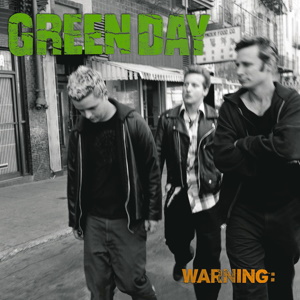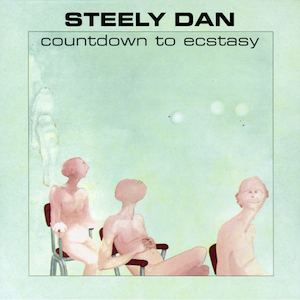Rock music is a broad genre of popular music that originated as "rock and roll" in the United States in the late 1940s and early 1950s, developing into a range of different styles in the mid-1960s and later, particularly in the United States and United Kingdom. It has its roots in 1940s and 1950s rock and roll, a style that drew directly from the blues and rhythm and blues genres of African-American music and from country music. Rock also drew strongly from a number of other genres such as electric blues and folk, and incorporated influences from jazz, classical, and other musical styles. For instrumentation, rock has centered on the electric guitar, usually as part of a rock group with electric bass guitar, drums, and one or more singers. Usually, rock is song-based music with a 4
4 time signature using a verse–chorus form, but the genre has become extremely diverse. Like pop music, lyrics often stress romantic love but also address a wide variety of other themes that are frequently social or political.

Damaged is the debut studio album by the American hardcore punk band Black Flag. SST Records released it on December 5, 1981.

Warning is the sixth studio album by American rock band Green Day, released on October 3, 2000, by Reprise Records. Building upon its predecessor Nimrod (1997), it eschewed the band's trademark sound and incorporated acoustic elements and pop and folk styles. Lyrically, the album contains more optimistic and inspirational themes in comparison to the band's earlier releases. Warning was also Green Day's first album since Kerplunk (1991) that was not produced by Rob Cavallo, although he did have a hand in its production and was credited as executive producer.

Music journalism is media criticism and reporting about music topics, including popular music, classical music, and traditional music. Journalists began writing about music in the eighteenth century, providing commentary on what is now regarded as classical music. In the 1960s, music journalism began more prominently covering popular music like rock and pop after the breakthrough of The Beatles. With the rise of the internet in the 2000s, music criticism developed an increasingly large online presence with music bloggers, aspiring music critics, and established critics supplementing print media online. Music journalism today includes reviews of songs, albums and live concerts, profiles of recording artists, and reporting of artist news and music events.

The Incredible String Band were a British psychedelic folk band formed by Clive Palmer, Robin Williamson and Mike Heron in Edinburgh in 1966. The band built a considerable following, especially in the British counterculture, notably with their albums The 5000 Spirits or the Layers of the Onion, The Hangman's Beautiful Daughter, and Wee Tam and the Big Huge. They became pioneers in psychedelic folk and, through integrating a wide variety of traditional music forms and instruments, in the development of world music.

Pretzel Logic is the third studio album by American rock band Steely Dan, released on February 20, 1974, by ABC Records. It was written by principal band members Walter Becker and Donald Fagen, and recorded at The Village Recorder in West Los Angeles with producer Gary Katz. It was the final album to feature the full quintet lineup of Becker, Fagen, Denny Dias, Jim Hodder, and Jeff "Skunk" Baxter and also featured significant contributions from many prominent Los Angeles-based studio musicians and the last to be made and released while Steely Dan was still an active touring band.

Robert Thomas Christgau is an American music journalist and essayist. Among the most well-known and influential music critics, he began his career in the late 1960s as one of the earliest professional rock critics and later became an early proponent of musical movements such as hip hop, riot grrrl, and the import of African popular music in the West. Christgau spent 37 years as the chief music critic and senior editor for The Village Voice, during which time he created and oversaw the annual Pazz & Jop critics poll. He has also covered popular music for Esquire, Creem, Newsday, Playboy, Rolling Stone, Billboard, NPR, Blender, and MSN Music, and was a visiting arts teacher at New York University. CNN senior writer Jamie Allen has called Christgau "the E. F. Hutton of the music world – when he talks, people listen."

Countdown to Ecstasy is the second studio album by the American rock band Steely Dan, released in July 1973 by ABC Records. It was recorded at Caribou Ranch in Nederland, Colorado, and at The Village Recorder in West Los Angeles, California. After the departure of vocalist David Palmer, the group recorded the album with Donald Fagen singing lead on every song.

Aftermath is a studio album by the English rock band the Rolling Stones. The group recorded the album at RCA Studios in California in December 1965 and March 1966, during breaks between their international tours. It was released in the United Kingdom on 15 April 1966 by Decca Records and in the United States on 2 July by London Records. It is the band's fourth British and sixth American studio album, and closely follows a series of international hit singles that helped bring the Stones newfound wealth and fame rivalling that of their contemporaries the Beatles.
Pop rock is a fusion genre with a greater emphasis on professional songwriting and recording craft, and less emphasis on attitude. Originating in the late 1950s as an alternative to normal rock and roll, early pop rock was influenced by the beat, arrangements, and original style of rock and roll. It may be viewed as a distinct genre field rather than music that overlaps with pop and rock. The detractors of pop rock often deride it as a slick, commercial product and less authentic than rock music.

Rockism is the belief that rock music is dependent on values such as authenticity and artfulness, and that such values elevate the genre over other forms of popular music. So-called "rockists" may promote the artifices stereotyped in rock music or may regard the genre as the normative state of popular music. Poptimism is the belief that pop music is as worthy of professional critique and interest as rock music. Detractors of poptimism describe it as a counterpart of rockism that unfairly privileges the most famous or best-selling pop, hip hop, and R&B acts.
Simon Robert Napier-Bell is an English record producer, music manager, author and journalist. At different times, he has managed artists as diverse as the Yardbirds, John's Children, Marc Bolan, Japan, London, Ultravox, Boney M, Sinitta, Wham!, Blue Mercedes, Alsou and Candi Staton, among others.
Sad Café are an English rock band formed in Manchester in 1976, who achieved their peak of popularity in the late 1970s and early 1980s. They are best known for the UK Top 40 singles "Every Day Hurts", "Strange Little Girl", "My Oh My" and "I'm in Love Again", the first of which was their biggest hit, reaching number 3 in the UK Singles Chart in 1979. The band also had two US Billboard Hot 100 hits with "Run Home Girl" and "La-Di-Da".
Joe Carducci is an American writer, record producer, and former A&R executive, formerly most closely associated with the influential record label SST Records.

Robert Hilburn is an American pop music critic, author, and radio host. As critic and music editor at the Los Angeles Times from 1970 to 2005, his reviews, essays and profiles appeared in publications around the world. Hilburn has since written a memoir and best-selling biographies of Johnny Cash and Paul Simon. He was a member of the nominating committee of the Rock and Roll Hall of Fame for more than 20 years and lives in Los Angeles.
Pacific Gas & Electric was an American rock band in the late 1960s and early 1970s, led by singer Charlie Allen. Their biggest hit was the gospel-tinged "Are You Ready?" in 1970.
The album era was a period in English-language popular music from the mid-1960s to the mid-2000s in which the album was the dominant form of recorded music expression and consumption. It was primarily driven by three successive music recording formats: the 33⅓ rpm long-playing record (LP), the audiocassette, and the compact disc. Rock musicians from the US and the UK were often at the forefront of the era, which is sometimes called the album-rock era in reference to their sphere of influence and activity. The term "album era" is also used to refer to the marketing and aesthetic period surrounding a recording artist's album release.

Christgau's Record Guide: Rock Albums of the Seventies is a music reference book by American music journalist and essayist Robert Christgau. It was first published in October 1981 by Ticknor & Fields. The book compiles approximately 3,000 of Christgau's capsule album reviews, most of which were originally written for his "Consumer Guide" column in The Village Voice throughout the 1970s. The entries feature annotated details about each record's release and cover a variety of genres related to rock music.

Christgau's Record Guide: The '80s is a music reference book by American music journalist and essayist Robert Christgau. It was published in October 1990 by Pantheon Books as a follow-up to Christgau's Record Guide: Rock Albums of the Seventies (1981).

Christgau's Consumer Guide: Albums of the '90s is a music reference book by American music journalist and essayist Robert Christgau. It was published in October 2000 by St. Martin's Press's Griffin imprint and collects approximately 3,800 capsule album reviews, originally written by Christgau during the 1990s for his "Consumer Guide" column in The Village Voice. Text from his other writings for the Voice, Rolling Stone, Spin, and Playboy from this period is also featured. The book is the third in a series of influential "Consumer Guide" collections, following Christgau's Record Guide: Rock Albums of the Seventies (1981) and Christgau's Record Guide: The '80s (1990).













